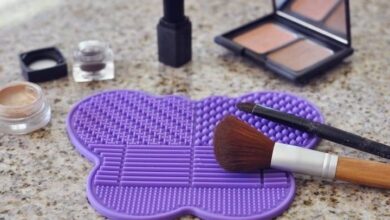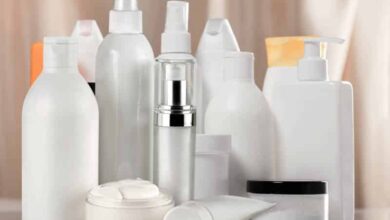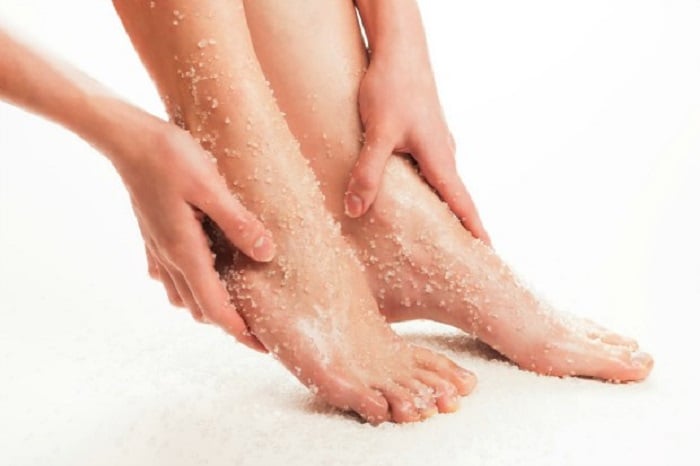
Sea salt skin benefits are gaining popularity as a natural way to enhance skin health. From exfoliation to hydration, sea salt’s mineral-rich composition offers a range of potential benefits for various skin types. This exploration delves into the history, chemistry, and diverse uses of sea salt in skincare routines.
Understanding the different types of sea salt, like Himalayan Pink and Dead Sea salts, reveals variations in mineral content and potential benefits. This article examines how these differences translate into distinct effects on skin, ranging from gentle exfoliation to deep hydration. It also highlights the potential of sea salt in treating specific skin conditions, like dry skin and acne, but emphasizes the importance of consulting a dermatologist before use.
Introduction to Sea Salt Skin Benefits
Sea salt, derived from evaporated seawater, offers a range of potential benefits for skin health. Its mineral-rich composition and historical use in skincare practices make it an intriguing natural remedy. From gentle exfoliation to potential hydration, sea salt’s versatility makes it a popular ingredient in various beauty routines. Understanding its properties and different types can help you choose the best option for your skin needs.Sea salt’s chemical composition is largely sodium chloride (NaCl), but it also contains trace minerals like magnesium, potassium, and calcium.
These minerals, naturally present in seawater, can contribute to skin health in various ways. The presence of these minerals can potentially enhance hydration and support skin’s natural barrier function.
Historical Uses of Sea Salt in Skincare
Sea salt has been used in skincare for centuries. Ancient civilizations recognized its potential for cleansing and exfoliating the skin. Traditional remedies often involved soaking or applying sea salt to the skin to remove impurities and promote healthy skin tone. These practices highlight the enduring appeal of sea salt’s natural properties in skincare.
Different Types of Sea Salt and Their Potential Benefits
Various types of sea salt, sourced from different regions, can have varying mineral profiles. These variations in mineral content may contribute to different potential benefits. The mineral composition of sea salt can impact its effects on the skin. For example, Himalayan pink salt is known for its high mineral content, while Dead Sea salt is particularly rich in minerals due to its unique environment.
Sea salt is amazing for your skin – it’s packed with minerals that can help exfoliate and leave you feeling refreshed. Plus, did you know that some of the most sought-after images in fashion magazines are often created by talented individuals like those on the meet the vogue and conde nast photovogue committee ? Their meticulous work, often showcasing stunning skin tones, really highlights how important good skincare is, and the amazing benefits of natural ingredients like sea salt.
So, next time you’re looking for a natural skin boost, remember the power of sea salt!
Understanding these differences can help in choosing the best sea salt for your specific skin needs.
Comparison of Sea Salt Types
| Sea Salt Type | Mineral Content | Potential Benefits |
|---|---|---|
| Himalayan Pink Salt | High in minerals, including magnesium, potassium, and calcium. Traces of other minerals such as iron and zinc are also present. | Potential for exfoliation, hydration, and soothing skin irritations. Its rich mineral content may help to replenish essential nutrients. |
| Dead Sea Salt | Extremely high in minerals, including magnesium, potassium, and calcium. The high concentration of minerals is a result of the unique environment of the Dead Sea. | Potential for hydration, skin soothing, and reducing inflammation. The high mineral content may help to draw out impurities and support skin regeneration. |
| Table Salt | Low in minerals, primarily sodium chloride. | Limited skin benefits compared to other types of sea salt. Its primary function is to provide sodium, which may not have a significant impact on skin health. |
Exfoliation and Skin Renewal: Sea Salt Skin Benefits
Sea salt, a seemingly simple ingredient, can work wonders for your skin. Its granular texture makes it an excellent natural exfoliant, gently removing dead skin cells and revealing a brighter, smoother complexion. This process not only enhances the appearance of your skin but also contributes to its overall health.
Sea Salt as a Natural Exfoliant
Sea salt’s effectiveness as an exfoliant stems from its small, abrasive particles. These particles gently scrub away the outermost layer of dead skin cells, revealing the fresh, healthy skin underneath. This process promotes a smoother, more even skin tone and texture. The natural minerals in sea salt can also provide additional benefits to the skin, like hydration and increased blood circulation.
Mechanisms of Dead Skin Cell Removal
The mechanical action of sea salt particles is key to removing dead skin cells. As the salt granules are rubbed against the skin, they physically dislodge the dead cells, much like scrubbing a surface with a brush. This process stimulates blood circulation and promotes cell turnover, leading to renewed skin. This gentle abrasion is significantly different from chemical exfoliation, which relies on chemical reactions to dissolve the dead skin cells.
Comparison to Other Exfoliation Methods
While sea salt provides a natural and gentle exfoliation, it’s important to compare it to other methods like chemical peels. Chemical peels use acids to dissolve dead skin cells, offering a deeper exfoliation. Chemical peels can be more potent and effective for treating certain skin conditions but also carry a higher risk of irritation and side effects. Sea salt, on the other hand, offers a milder approach, making it suitable for most skin types.
Its gentle action minimizes the risk of irritation.
Benefits of Exfoliation for Skin Health
Regular exfoliation offers several benefits for skin health. Improved skin texture is a key benefit, leading to a smoother, more radiant complexion. Exfoliation also helps to reduce the appearance of acne by removing dead skin cells that can clog pores. Additionally, it helps to promote the absorption of skincare products, maximizing their effectiveness. It’s important to note that exfoliation should be done with caution and appropriate frequency, depending on your skin type.
Sea Salt Exfoliation Methods
| Exfoliation Method | Procedure | Potential Benefits |
|---|---|---|
| Sea Salt Scrub | Mix a small amount of sea salt with a carrier oil, such as olive oil or coconut oil, to create a paste. Gently massage the scrub onto the skin in circular motions. Rinse thoroughly with lukewarm water. | Gentle exfoliation, suitable for most skin types. |
| Sea Salt Mask | Combine sea salt with a small amount of water to create a thick paste. Apply the mask to the affected areas and leave it on for 5-10 minutes. Gently scrub the mask off with lukewarm water. | Deep exfoliation, suitable for addressing stubborn dead skin build-up. |
Hydration and Moisture Retention
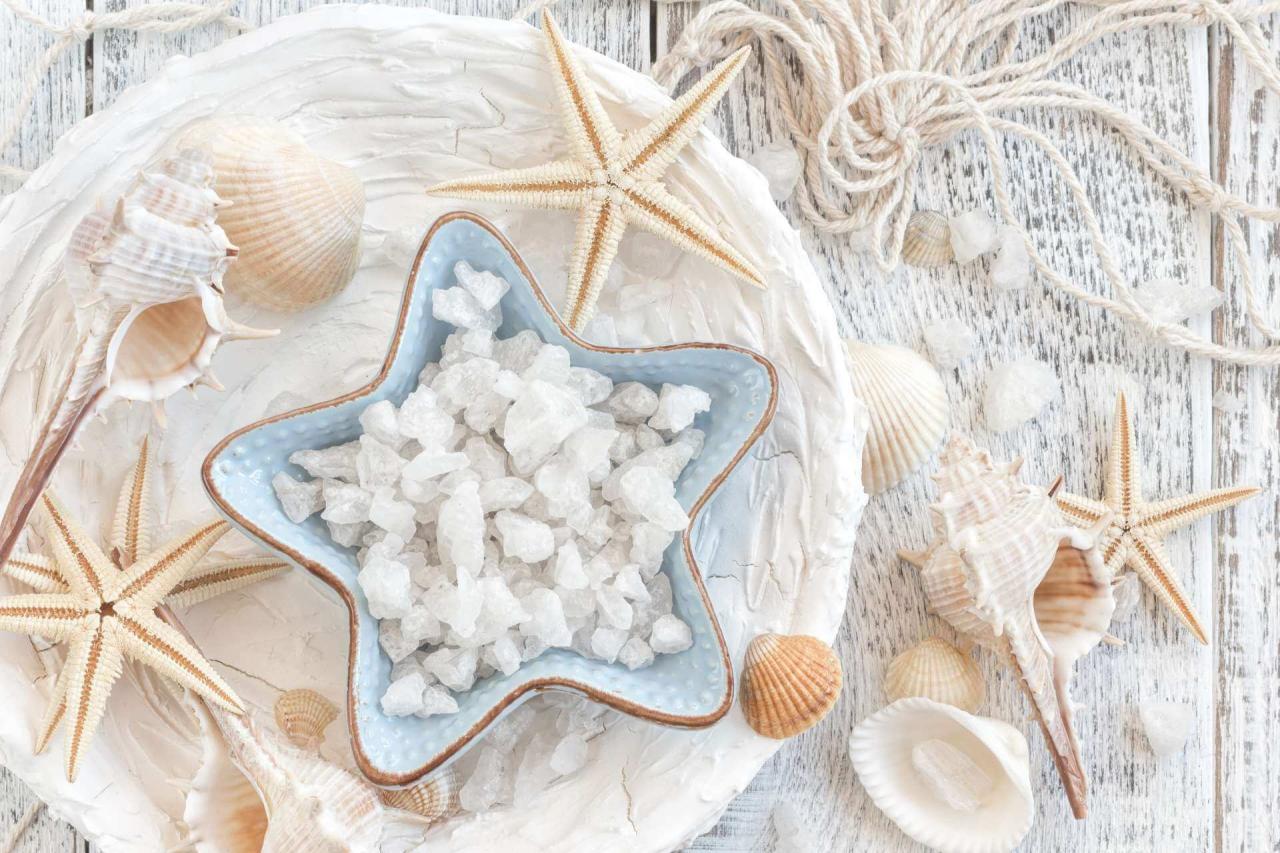
Sea salt, often overlooked for its hydrating properties, can actually play a significant role in maintaining healthy, moisturized skin. Its unique mineral composition contributes to skin’s moisture barrier, helping to lock in essential hydration and preventing moisture loss. Understanding how sea salt contributes to hydration is key to maximizing its benefits in skincare routines.Sea salt’s ability to hydrate skin stems from its rich mineral content.
These minerals, including magnesium, potassium, and sodium, are naturally drawn to the skin, helping to attract and retain water. Think of it like a sponge; the minerals help the skin absorb and hold onto moisture more effectively. This process strengthens the skin’s natural moisture barrier, a crucial aspect of healthy skin.
Sea salt scrubs are amazing for exfoliating and rejuvenating skin. They’re a natural way to get glowing, healthy skin, perfect for that special occasion. Thinking about a stunning wedding look? Check out the latest announcement from Vogue Wedding Atelier India vogue wedding atelier india announcement for inspiration on bridal beauty trends. These luxurious treatments often incorporate sea salt, highlighting its versatility in skincare routines.
Minerals and Skin Moisture
Sea salt’s minerals are crucial in replenishing skin’s natural hydration levels. These minerals work synergistically with the skin’s own natural mechanisms, improving its ability to retain moisture. Magnesium, in particular, plays a vital role in cell function and hydration. Potassium aids in regulating water balance within the skin cells, and sodium is essential for maintaining the skin’s overall hydration and elasticity.
These minerals, found in varying concentrations in different types of sea salts, contribute to different levels of hydration.
Sea Salt and Moisture Barrier Improvement
Sea salts can enhance the skin’s natural moisture barrier. A healthy moisture barrier acts as a protective shield, preventing water loss and maintaining optimal hydration levels. The minerals in sea salt can help to strengthen this barrier, leading to a noticeable improvement in skin’s moisture retention. This is particularly beneficial for individuals with dry or sensitive skin.
Comparison to Other Moisturizing Ingredients
While sea salt can contribute to hydration, its effects differ from other moisturizing ingredients. For example, hyaluronic acid is a popular humectant that attracts and binds water to the skin. However, sea salt’s hydration benefits are derived from its mineral content, acting more as a supportive element in the skin’s natural hydration process. Other ingredients like ceramides are essential components of the skin’s barrier, whereas sea salt contributes to maintaining its integrity and function.
The combination of sea salt with other moisturizing agents can create a more comprehensive hydration approach.
Moisturizing Properties of Different Sea Salts
| Sea Salt Type | Moisture Level | Skin Effect |
|---|---|---|
| Dead Sea Salt | High | Intense hydration, due to its high mineral concentration, particularly magnesium and potassium. |
| Himalayan Pink Salt | Moderate | Gentle hydration, rich in minerals like potassium and sodium, providing a more balanced moisture boost. |
| Sea Salt (General) | Low | Limited hydration, primarily used for exfoliation. Lower mineral concentration compared to Dead Sea or Himalayan salt. |
Skin Conditions and Sea Salt
Sea salt, a naturally occurring mineral, has been used for centuries in various beauty and health practices. While its potential benefits for general skin health are well-documented, its efficacy in treating specific skin conditions is less clear-cut. This section explores the potential benefits of sea salt for managing certain skin issues, along with important caveats and safety considerations.
Potential Benefits for Specific Skin Conditions
Sea salt’s purported benefits for skin conditions often stem from its exfoliating properties. Fine sea salt crystals can gently remove dead skin cells, promoting cell turnover and potentially revealing healthier, smoother skin underneath. However, the effectiveness and safety of sea salt for treating specific conditions require further investigation and careful consideration.
Acne and Sea Salt
Sea salt’s exfoliating action might help unclog pores and reduce the appearance of acne. Some believe that the minerals in sea salt can help fight bacteria, another factor implicated in acne development. However, the scientific evidence supporting these claims is limited. Applying sea salt directly to acne-prone skin can be irritating and potentially exacerbate the condition. A gentle exfoliating scrub containing sea salt might be used as part of a broader acne treatment plan, but only after consulting a dermatologist.
Crucially, avoid applying sea salt directly to active breakouts.
Eczema and Sea Salt
Eczema is a chronic inflammatory skin condition characterized by dry, itchy, and inflamed skin. Some proponents suggest that sea salt’s hydrating properties can help soothe dry, irritated skin associated with eczema. However, the effectiveness of sea salt for eczema is not widely supported by scientific research. Its use may be irritating to sensitive skin, potentially worsening the condition.
Before incorporating sea salt into an eczema treatment routine, it’s crucial to consult a dermatologist for personalized advice.
Sea salt scrubs are amazing for exfoliating dead skin cells, leaving your complexion smoother and brighter. But for a truly radiant glow, pairing it with the right skincare routine is key. A potent vitamin C serum, like the best vitamin c serum available, can further enhance the benefits of sea salt by boosting collagen production and protecting your skin from environmental damage.
Ultimately, incorporating sea salt into your routine can give you healthy, glowing skin!
Psoriasis and Sea Salt
Similar to eczema, psoriasis is a chronic skin condition characterized by red, flaky patches. Some people believe sea salt can help alleviate these symptoms by gently exfoliating the affected areas. However, as with eczema, the scientific evidence supporting sea salt’s effectiveness in treating psoriasis is limited. The potential for irritation and worsening of the condition must be considered.
Always consult a dermatologist for appropriate psoriasis treatment.
Important Considerations and Safety
| Skin Condition | Sea Salt Potential Benefits | Important Considerations |
|---|---|---|
| Acne | Potential exfoliation, unclogging of pores | Avoid direct application to active breakouts; may irritate sensitive skin. |
| Eczema | Potential hydration | May irritate sensitive skin; consult a dermatologist. |
| Psoriasis | Potential exfoliation | May irritate sensitive skin; consult a dermatologist. |
| Dry Skin | Hydration | Monitor for sensitivity; avoid excessive use. |
Always consult a dermatologist before incorporating sea salt into your skincare routine, especially for chronic skin conditions.
Dermatologists can provide personalized advice and assess the suitability of sea salt for your specific needs and skin type. They can also rule out underlying conditions that may be contributing to the skin issue.
Safety and Precautions
Sea salt, while offering potential benefits for skin health, must be used with caution. Understanding the potential risks and implementing safe practices is crucial for maximizing its benefits and minimizing any adverse effects. Improper use can lead to skin irritation, allergies, or other complications.Using sea salt for skin care requires a mindful approach, focusing on moderation, dilution, and proper application techniques.
It’s vital to respect your skin’s individual sensitivities and avoid any practices that could harm its delicate structure. Always prioritize safety and seek professional advice when necessary.
Potential Skin Irritations and Allergies
Sea salt, even in its natural form, can cause skin irritation or allergic reactions in susceptible individuals. This is primarily due to the concentration of minerals and potential sensitivities to particular compounds within the salt. The skin’s delicate barrier can be compromised by harsh ingredients, leading to redness, itching, and discomfort.
Importance of Using Sea Salt in Moderation
Overusing sea salt for skin treatments can exacerbate potential irritations. Like any skincare ingredient, moderation is key. Start with small amounts and gradually increase usage only if your skin tolerates it well. Consistent and prolonged use of undiluted or overly concentrated sea salt solutions can cause prolonged irritation and damage the skin’s protective barrier.
Dilution Techniques for Topical Use
Diluting sea salt is essential for safe topical application. A general guideline is to mix one teaspoon of sea salt with four teaspoons of warm water. This dilution significantly reduces the concentration of salt, lessening the risk of irritation. Experiment with different dilutions to find the optimal concentration for your skin’s sensitivity.
Risks of Using Sea Salt on Open Wounds or Broken Skin
Applying sea salt to open wounds or broken skin is strongly discouraged. The abrasive nature of sea salt can further irritate and exacerbate the existing injury. This can lead to increased pain, inflammation, and hinder the healing process. Always prioritize the healing of the wound and seek professional medical advice.
Importance of Patch Testing
Before using sea salt on large areas of the skin, it’s crucial to perform a patch test. Apply a small amount of diluted sea salt solution to a small, inconspicuous area, such as the inside of your wrist or forearm. Observe the area for any signs of irritation or allergic reactions for at least 24 hours. If no adverse effects are observed, you can proceed with using sea salt on a larger area.
Contraindications for Sea Salt Use
Certain conditions or situations may make sea salt unsuitable for skin use. These include:
- Known allergies to sea salt or other minerals.
- Existing skin conditions, such as eczema or psoriasis, where irritation could worsen the condition.
- Skin that is already highly sensitive or prone to irritation.
- Open wounds, cuts, or broken skin.
- Pregnancy or breastfeeding, where the safety of certain ingredients is less clear.
Potential Side Effects and Precautions
| Side Effect | Description | Prevention |
|---|---|---|
| Skin Irritation | Redness, itching, stinging, burning | Dilute sea salt, patch test, avoid excessive use |
| Allergic Reaction | Hives, swelling, rash, difficulty breathing (in severe cases) | Consult a dermatologist, avoid use if known allergy, patch test |
| Exacerbation of Existing Skin Conditions | Increased redness, itching, scaling, or inflammation in individuals with eczema, psoriasis, or other skin conditions | Consult a dermatologist, avoid use if skin condition is present |
Sea Salt Skincare Recipes
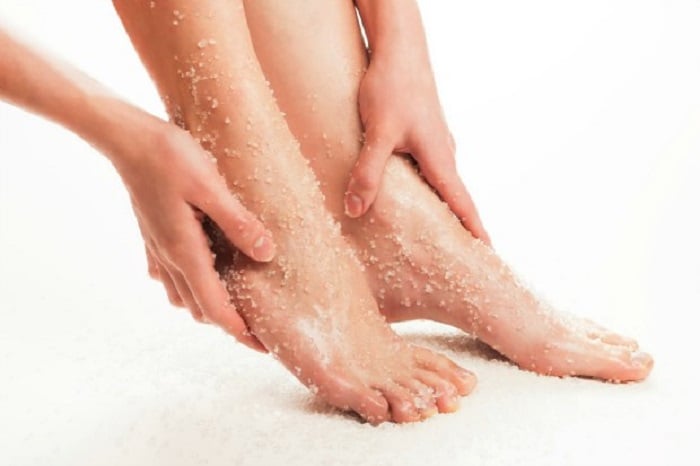
Sea salt, a natural exfoliant and mineral-rich ingredient, can be a powerful addition to your skincare routine. These recipes utilize sea salt’s unique properties to enhance skin health and appearance. These homemade recipes are simple and cost-effective, allowing you to tailor treatments to your specific needs.Using sea salt in skincare offers a range of benefits, from gently exfoliating dead skin cells to hydrating and moisturizing the skin.
Sea salt’s minerals can also help to balance the skin’s pH levels, reducing inflammation and promoting a healthier complexion.
Sea Salt Scrubs
Sea salt scrubs are a fantastic way to gently exfoliate the skin, removing dead skin cells and promoting cell turnover. This process helps to reveal smoother, brighter skin. These scrubs can be used on the body, and face, depending on the ingredients.
- Basic Sea Salt Scrub (for Body): This recipe is perfect for invigorating and refreshing your skin. Combine 1/4 cup of fine sea salt with 2 tablespoons of olive oil. Mix well until a paste forms. Apply the scrub in circular motions to the desired area, avoiding the face. Rinse thoroughly with warm water.
- Honey-Infused Sea Salt Scrub (for Body): This scrub adds a touch of sweetness and moisturizing properties. Combine 1/4 cup fine sea salt with 1 tablespoon of olive oil and 1 teaspoon of honey. Mix until a smooth paste forms. Massage onto damp skin in circular motions, focusing on areas needing exfoliation. Rinse with lukewarm water.
Sea Salt Masks
Sea salt masks can help draw out impurities and reduce inflammation. The application should be gentle, as some ingredients may cause irritation.
- Basic Sea Salt Mask (for Face): This simple mask can help to draw out impurities and gently exfoliate the face. Mix 1 tablespoon of fine sea salt with 1 tablespoon of plain yogurt and 1 teaspoon of honey. Apply a thin layer to the face, avoiding the eye area. Leave on for 10-15 minutes, then rinse with lukewarm water.
- Sea Salt Mask with Avocado (for Face): Combine 1 tablespoon of fine sea salt with 1 mashed avocado and 1 tablespoon of plain yogurt. Apply the mask evenly to the face and neck. Leave on for 15-20 minutes, and rinse with lukewarm water. This mask is excellent for hydrating and nourishing the skin.
Essential Ingredients for Sea Salt Skincare Products
- Fine Sea Salt: Essential for gentle exfoliation.
- Carrier Oils (e.g., Olive Oil, Coconut Oil, Almond Oil): These oils help to moisturize and condition the skin while aiding in the application of the salt.
- Moisturizers (e.g., Honey, Yogurt, Avocado): These ingredients provide additional hydration and nutrients to the skin.
Sea Salt Skincare Recipes Table, Sea salt skin benefits
| Recipe Name | Ingredients | Instructions |
|---|---|---|
| Sea Salt Scrub (Basic) | 1/4 cup fine sea salt, 2 tablespoons olive oil | Mix salt and oil. Massage onto skin in circular motions. Rinse with warm water. |
| Honey-Infused Sea Salt Scrub | 1/4 cup fine sea salt, 1 tablespoon olive oil, 1 teaspoon honey | Mix salt, oil, and honey. Massage onto damp skin. Rinse with lukewarm water. |
| Basic Sea Salt Mask | 1 tablespoon fine sea salt, 1 tablespoon plain yogurt, 1 teaspoon honey | Mix ingredients. Apply to face, avoiding eyes. Leave on for 10-15 minutes. Rinse with lukewarm water. |
| Sea Salt Mask with Avocado | 1 tablespoon fine sea salt, 1 mashed avocado, 1 tablespoon plain yogurt | Mix ingredients. Apply to face and neck. Leave on for 15-20 minutes. Rinse with lukewarm water. |
Conclusive Thoughts
In conclusion, sea salt’s versatility as a natural skincare ingredient is undeniable. From its exfoliating properties to its hydrating effects, sea salt offers a unique approach to improving skin health. However, careful consideration of different salt types, application methods, and potential side effects is crucial for optimal results. Always prioritize safety and consult with a dermatologist if you have any concerns.


